The Plextor M9Pe NVMe SSD Review: Teaching An Old Chip New Tricks
by Billy Tallis on May 24, 2018 1:00 PM ESTAnandTech Storage Bench - Light
Our Light storage test has relatively more sequential accesses and lower queue depths than The Destroyer or the Heavy test, and it's by far the shortest test overall. It's based largely on applications that aren't highly dependent on storage performance, so this is a test more of application launch times and file load times. This test can be seen as the sum of all the little delays in daily usage, but with the idle times trimmed to 25ms it takes less than half an hour to run. Details of the Light test can be found here. As with the ATSB Heavy test, this test is run with the drive both freshly erased and empty, and after filling the drive with sequential writes.
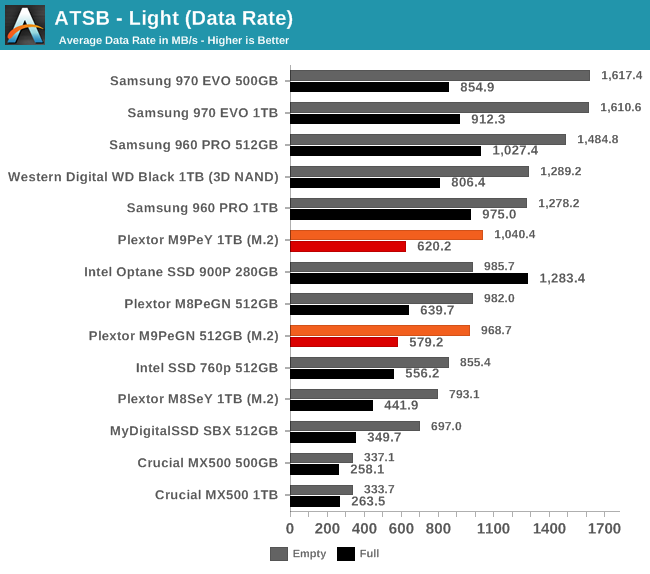
The average data rates from the Plextor M9Pe on the Light test again show it taking less of a performance hit from being full than what most TLC-based drives suffer. Unfortunately, most other recent TLC-based drives have enough of an advantage in the empty-drive performance that their full-drive scores are still ahead of the M9Pe.
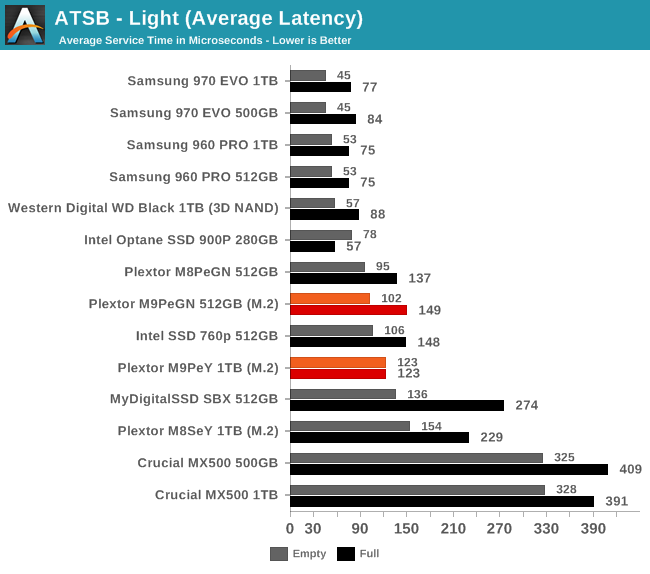
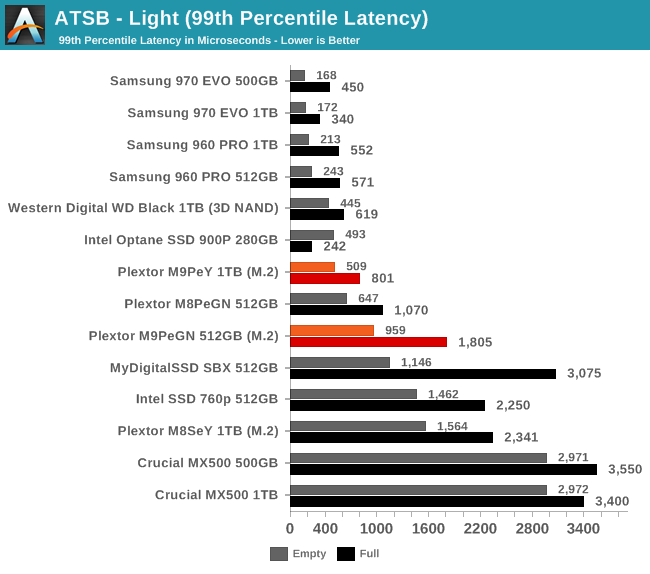
All of these SSDs have average latencies well below 1ms on the Light test, and even the SATA drive is more than fast enough. Some of the 99th percentile scores are high enough to potentially matter, but the 1.8ms from the M9Pe 512GB when the drive is full isn't quite that bad.
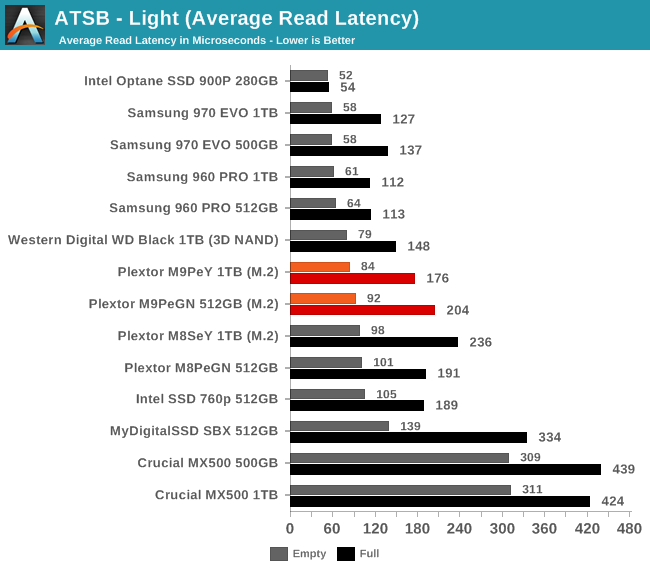
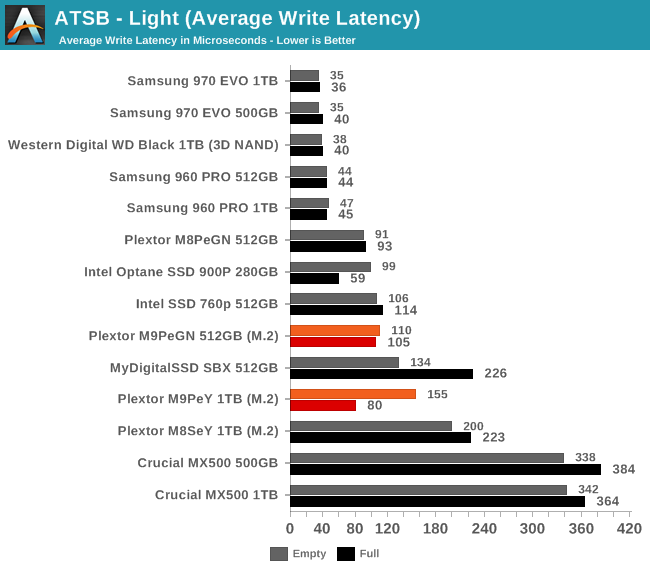
Average read latencies from the M9Pe are close enough to the fastest drives that the differences don't matter at all. Average write latencies are clearly worse for the M9Pe than for the top tier of drives, but even 100µs is insignificant for this kind of workload.
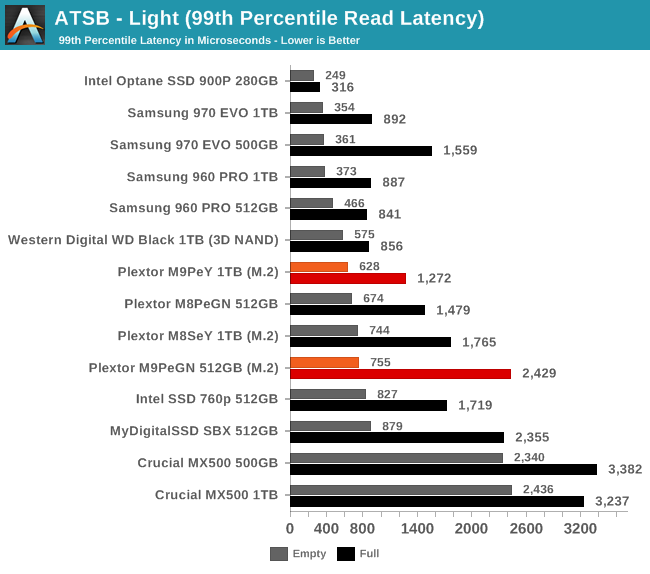
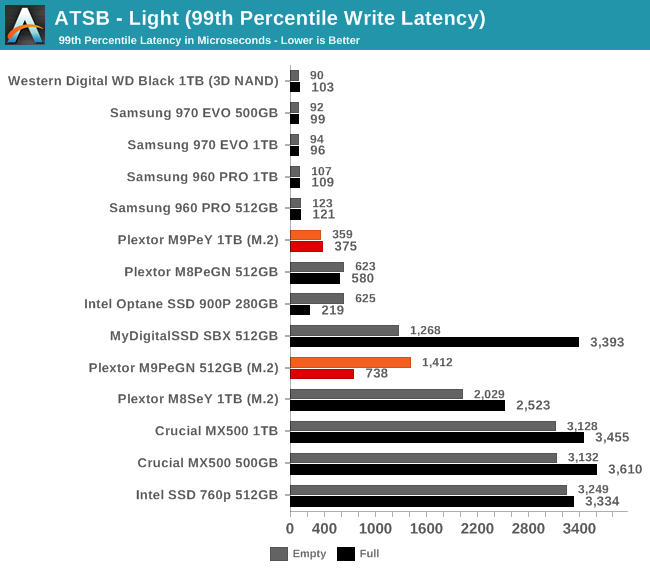
The 99th percentile read latency scores from the M9Pe stand out a bit for the full-drive test runs. The 99th percentile write latency scores show that the M9Pe avoids the problems that the Intel 760p and MyDigitalSSD SBX have with occasionally dropping down to SATA performance levels.
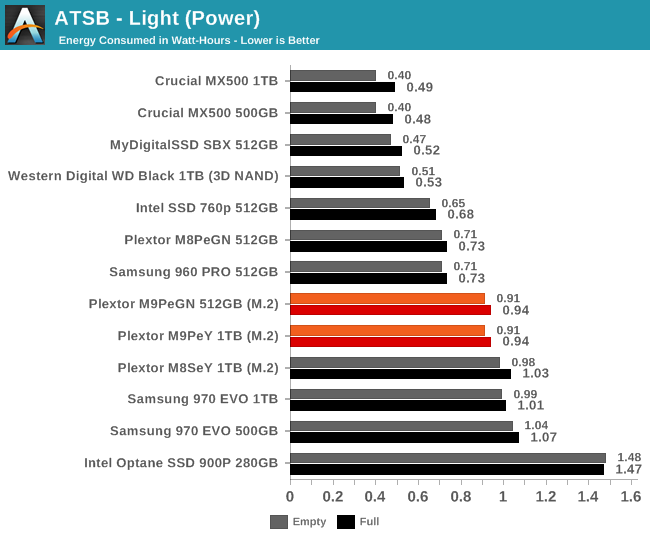
Energy usage is once more worse than average for the M9Pe, but several of the fastest drives also use more energy on the Light test than the M9Pe does.










15 Comments
View All Comments
Yuriman - Thursday, May 24, 2018 - link
Looks like that heatspreader does it a lot of good.peevee - Tuesday, May 29, 2018 - link
But the price of it? I understand it for $4 on 256GB model. But why the same thing is closer to $40 on 1T?romrunning - Thursday, May 24, 2018 - link
Regarding the testing platform: "The Windows 10 version will still be 1709, because Microsoft has not yet fixed all the new bugs introduced in the NVMe driver in Windows 10 version 1803."If you're referring to the issues with Intel 600p drives in the April Update (version 1803), Microsoft released a new patch (KB4100403) that "Addresses an issue with power regression on systems with NVMe devices from certain vendors."
So it sounds like you should be able to update Windows to 1803 as long as you include that patch.
Billy Tallis - Thursday, May 24, 2018 - link
That's not the only problem that's been reported with 1803's NVMe driver. I don't trust that they've even found all the new bugs yet, let alone patched them all. And I actually started running the new tests almost a month ago, to try to minimize the interruption to our review schedule.Drazick - Thursday, May 24, 2018 - link
Are you sure it is Microsoft's issue and not the firmware of those drives?Billy Tallis - Thursday, May 24, 2018 - link
In the absence of a proper changelog from Microsoft, I assume the new issues are mostly their fault. At the very least, they're responsible for upsetting whatever fragile balance of bugs the SSD manufacturers have achieved by testing against previous versions of Windows 10. I want to freeze my testbed software configuration for at least a year, and there's sufficient reason to consider 1803 as still being essentially beta-quality and thus a bad choice for the 2018 SSD test suite.GeorgeH - Thursday, May 24, 2018 - link
FWIW that's very reasonable. It's utterly foolish to update to any Windows 10 version until at least 6 months after release (unless your time is worthless and you'd like to do free QA for Microsoft, of course).lmcd - Thursday, May 24, 2018 - link
Not even close to true. In fact, it's because I value my time that I upgraded to 1803 immediately. 1803 adds the "Windows Hypervisor Platform" to its features, which (as a primary effect) allows Docker for Windows and a buggy-but-usable Xamarin variant of AVD to run side-by-side (along with other Hyper-V images). It's possible we even see VirtualBox run on this excellent feature, though I don't know if it's on their roadmap yet.smilingcrow - Friday, May 25, 2018 - link
Which is an irrelevant feature for most home users so your post is myopic.Death666Angel - Friday, May 25, 2018 - link
If you are running normal consumer grade hardware, I don't think that is the case.